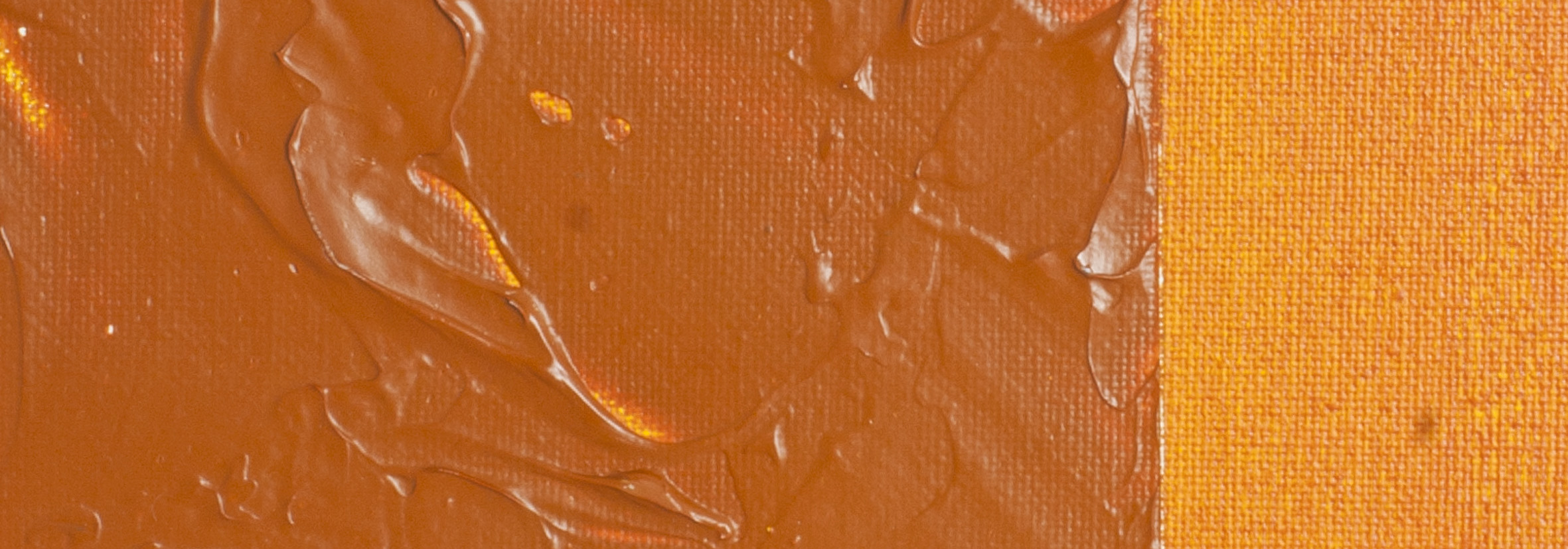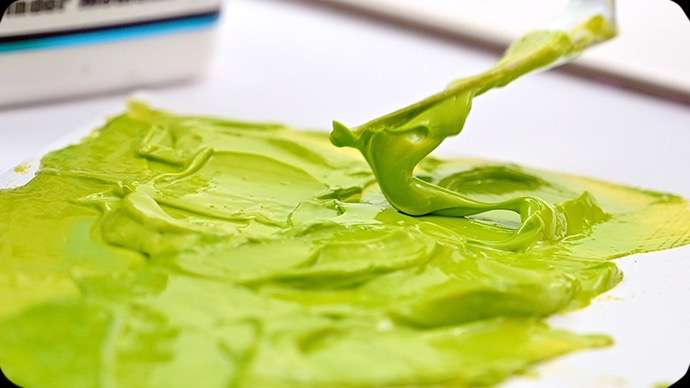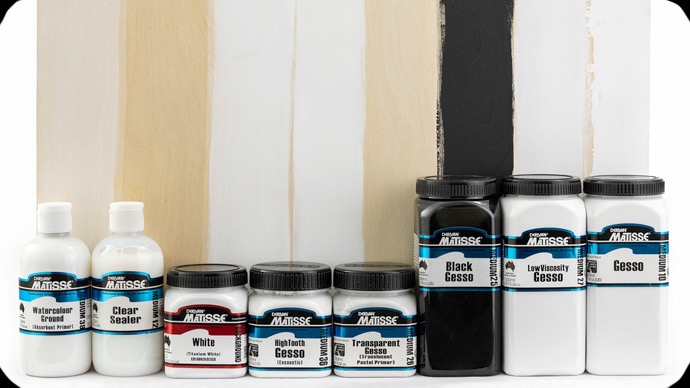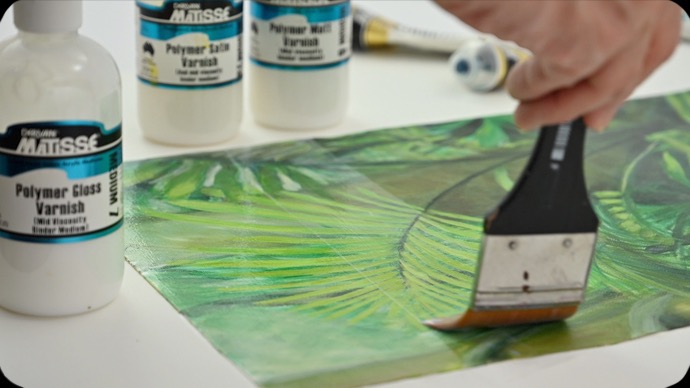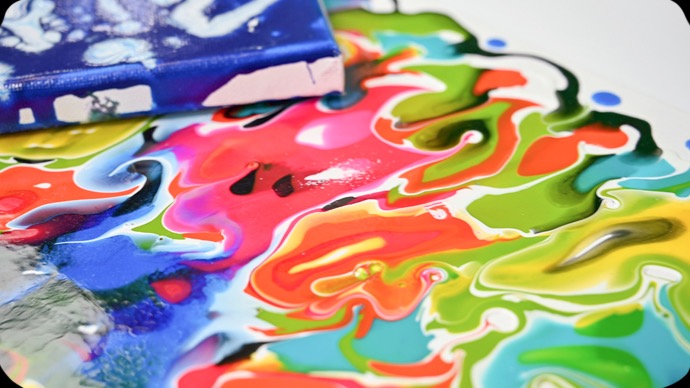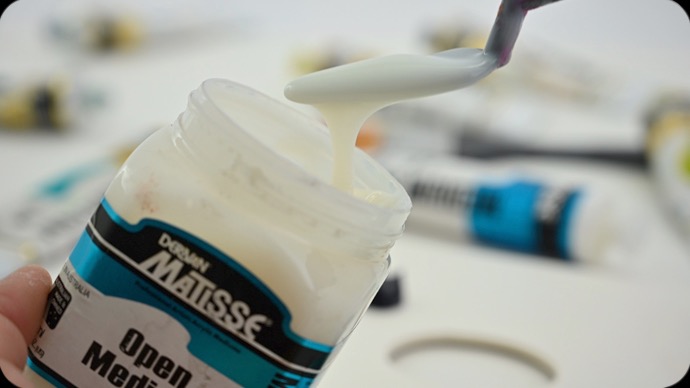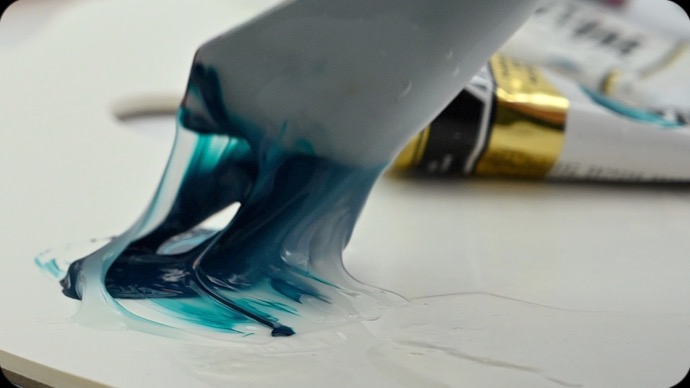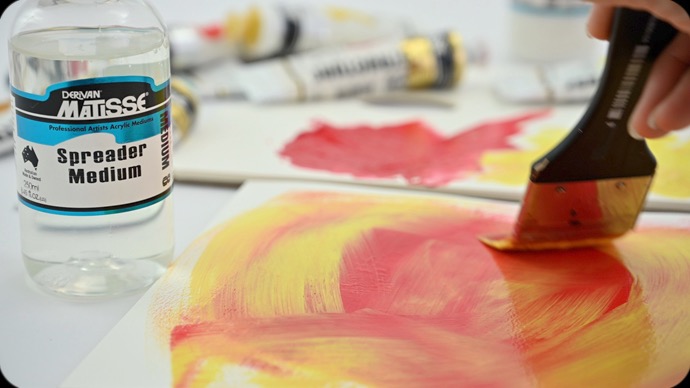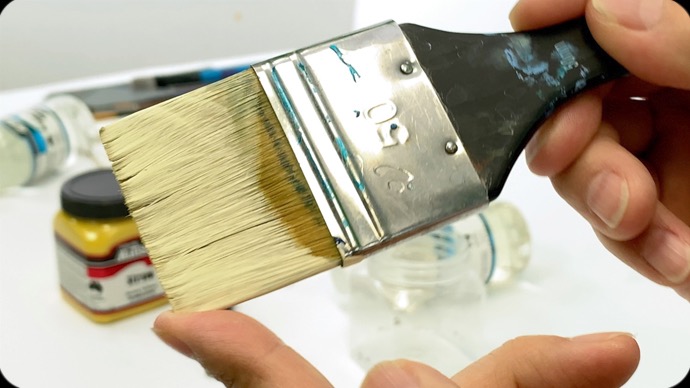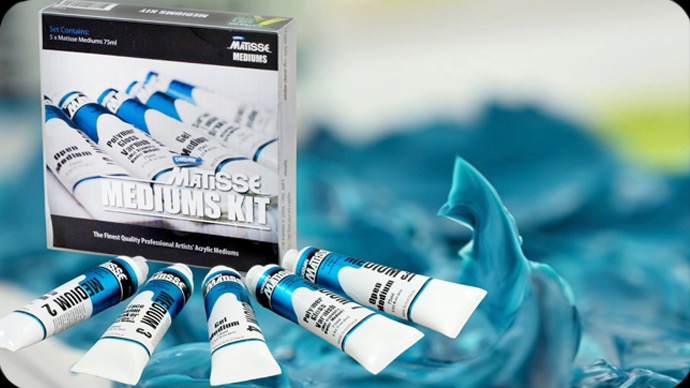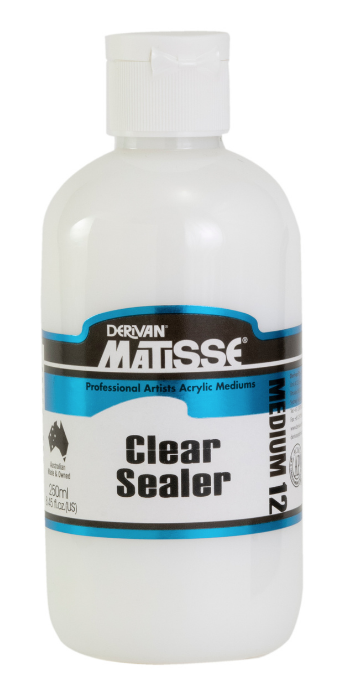
MM12 Matisse Clear Sealer
Surface Preparation With Clear Sealer
Clear Sealer can be used on raw wood if you are not using a Matisse Background Colour (which has a built-in sealer) and want to paint a design on the raw wood leaving the natural grain revealed. MM12 Clear Sealer will block tannins from wood bleeding through subsequent layers. It can also be used on glass, ceramics, terracotta pots and new metal. All surfaces should be clean and dust-free before MM12 Clear Sealer application. For porous surfaces such as wood, terracotta pots, unfired ceramics, etc. Apply diluted with up to 1 part water to 2 parts MM12 Clear Sealer.
How To Paint On Raw Canvas
If a preference for working directly onto the raw canvas is desired, Matisse Professional Artist Acrylics can be used straight onto the surface. However, it is advisable to seal the canvas first with Matisse Clear Sealer. Sealing the raw canvas will increase its longevity. As canvas is quite porous, it tends to mark and stain quite easily and sealing will reduce this tendency. Sealing will help to protect cotton and linen canvas from mould and bacteria. It will also prevent the paint from staining the canvas.
Painting On Raw Wood
Matisse colours can be applied directly to wood and cleaned of all dust, oil and grease. If the wood appears to be unduly sappy or green. In that case, the use of Matisse Clear Sealer is advised as it blocks the natural tannins in the wood, thus preventing the discolouration of any painted designs.
Allowing the artist to paint a design on raw wood, leaving the natural grain visible. It is advised to give the surface light sand to help with adhesion. Leave to dry for 24 hours to ensure the medium is fully cured.
Painting On Terracotta Pots, Glass, Metal And Ceramics
Clear Sealer can also be used on glass, ceramics, terracotta pots and new metal. On application, this sealer may appear to be slightly white but will become transparent as it dries. It is essential to apply the product methodically and not keep working the surface as it begins to dry. Doing so can result in white patches as the brush scratches the drying sealer. Two coats are recommended to achieve a consistent finish. Allow approximately 1-3 hours for drying, depending upon weather conditions.
All surfaces should be clean and dust-free before MM12 Clear Sealer application. For porous surfaces such as wood, terracotta pots, unfired ceramics, etc., apply diluted with up to 1 part water to 2 parts MM12 Clear Sealer.
How to Paint on Concrete
If the concrete is new, it would be prudent to apply a coat of Matisse Clear Sealer before painting to block any potential leaching of alkaline residue. Alkaline residue can affect some acrylic colours if leached in high enough concentrations.
Clean-faced or polished concrete may need to be sandblasted to give a surface for a primer to adhere to.
How To Paint On Plastics And Melamines
Matisse colours will adhere directly to most plastics. Non-porous materials such as perspex, melamine or nylon should be lightly sanded; then, a bonding coat applied of undiluted Matisse Clear Sealer. Paint as desired and finish with a coat of Polymer Gloss Varnish coat.
How To Paint On Stone
The stone should be cleaned of all oil, grease and loose dust and sand. Some types of stone are unsuitable for painting as they tend to flake and fall apart. Most natural stones should be generally sealed with Matisse Clear Sealer, Matisse acrylics can now be used directly over the Sealer, or Matisse Gesso may be used as a ground if preferred. If the painted stone is to be left out in the elements, two coats of Matisse Final Varnish Gloss Finish, Mattise Final Varnish Matt Finish or MM29 Final Varnish Satin Finish is recommended.
How To Paint On Plaster / Stucco
New plaster should dry for at least two weeks before a coat of Matisse Clear Sealer is applied. Matisse Gesso may then be used, or Matisse colours applied directly over the MM12 Clear Sealer. After the work is completed, a coat of Matisse Polymer Gloss Varnish will add protection. If the work is to be exposed to sun and rain, a further coat of MM14 Final Varnish Gloss Finish is recommended.
Can You Mix Clear Sealer With Matisse Acrylics?
You can also stain and seal the wood. For a tinted effect, add a small amount of Matisse Flow artists acrylic in the desired colour and apply evenly, finishing one surface at a time.
Matisse Clear Sealer is water-resistant, quick drying and flexible. Do not allow it to freeze.
Clear Sealer Safety Data Sheet (SDS)
To view or download a copy of Matisse Clear Sealer SDS, please CLICK HERE* (280kb) *The above link will open an external Dropbox window
MATISSE CLEAR SEALER IS AVAILABLE IN
250ml, 1Ltr,
Mediums by Category
BACK TO MEDIUMS
SEE BELOW FOR LIST OF MATISSE MEDIUMS - Quick links

To install this Web App in your iPhone/iPad press ![]() and then Add to Home Screen.
and then Add to Home Screen.
